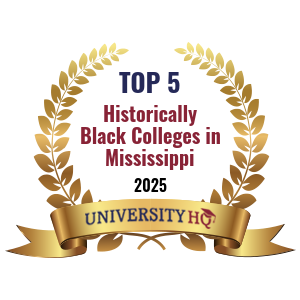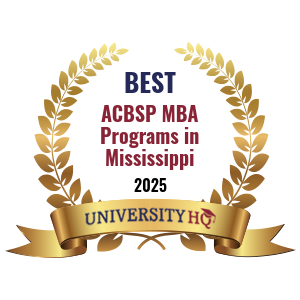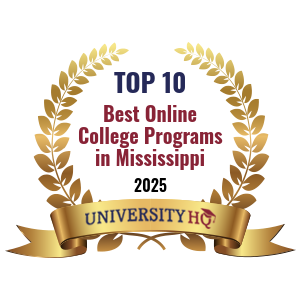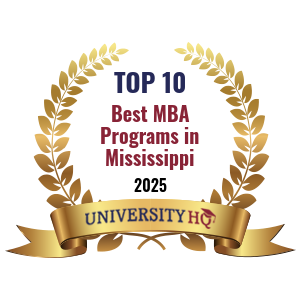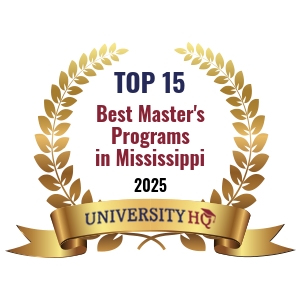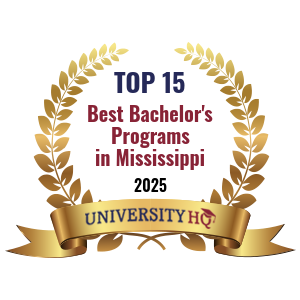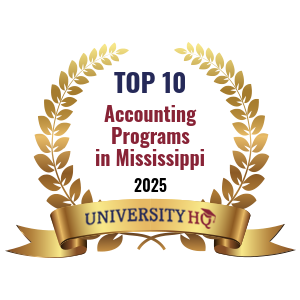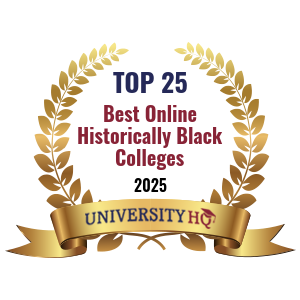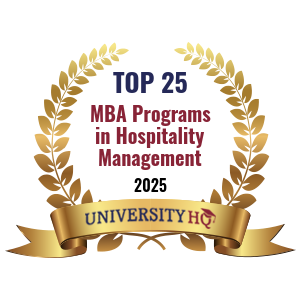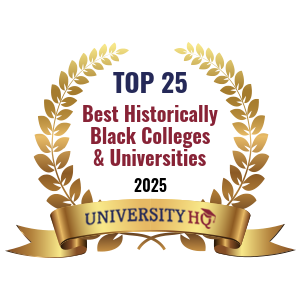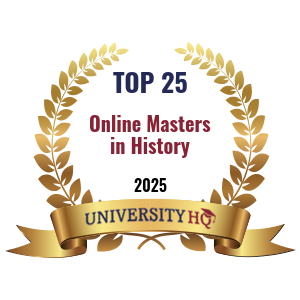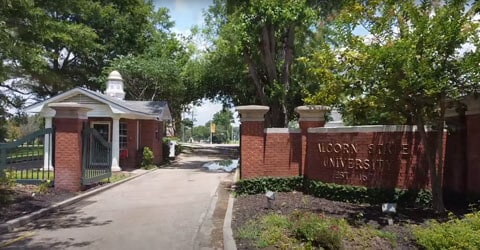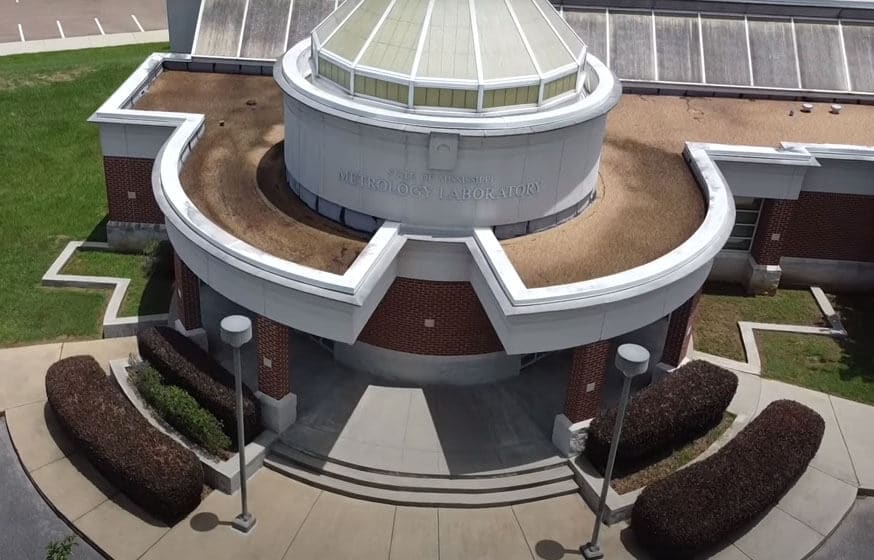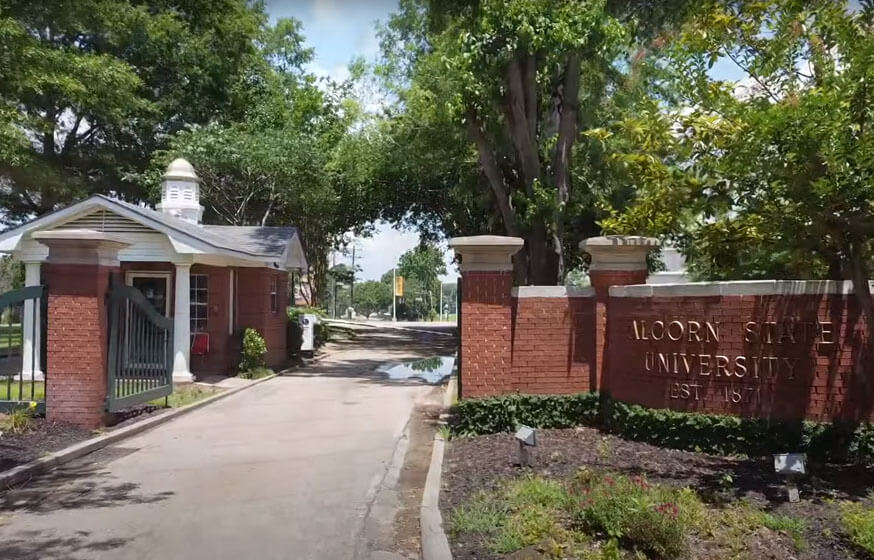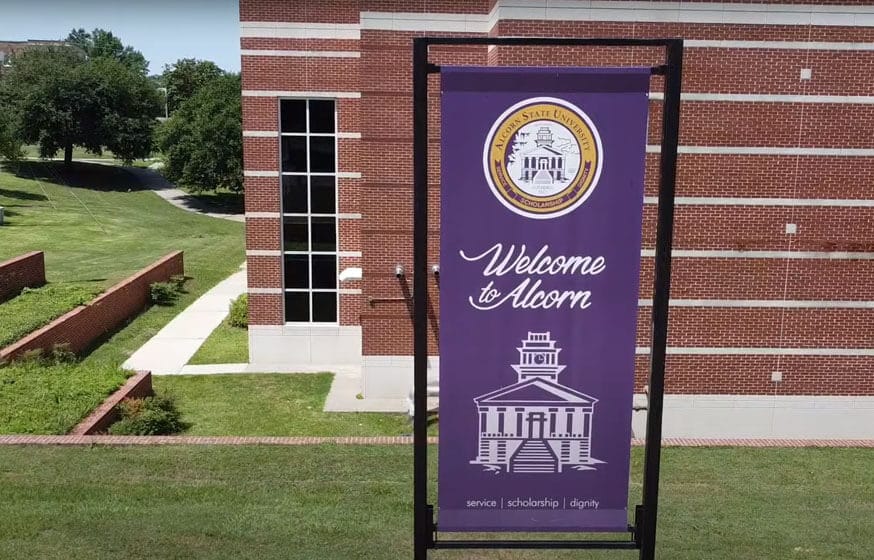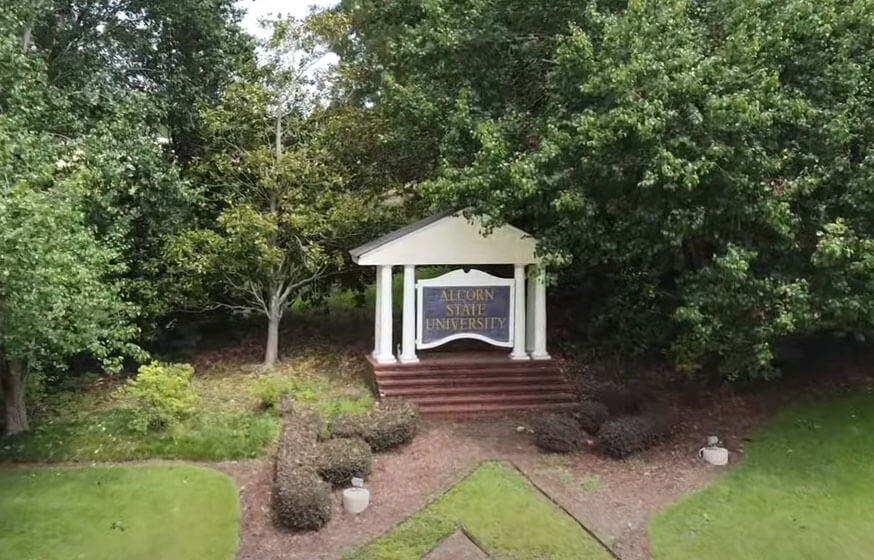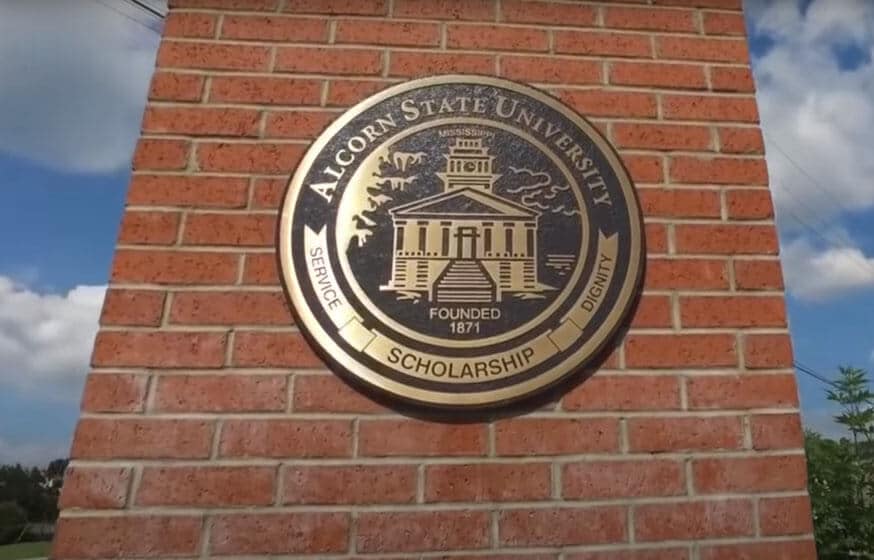University Headquarters (HQ) is an industry-leading, independent educational organization that provides independent college rankings using a proprietary formula to create first class unbiased rankings. The team at University HQ strives to provide accurate and trustworthy rankings that highlights the best programs.
Get Matched With Online Colleges
Right in the center of Lorman, Mississippi, you’ll find Alcorn State University. If you take a look at a map of the university or visit before deciding to attend, you’ll see buildings separated by large, green areas, so you may have to hurry to get from one class to the next—or even from your dorm to your classes. But at least it will be a pretty run. If you decide to bring your car with you to school, plan to get a student parking sticker—you’ll need it. Lorman is small, so you’ll be able to easily figure out where everything is located, from restaurants to shopping.
Search All Programs
Overview of Alcorn State University
Alcorn State is a public university, offering an education to over 3,500 students. It’s small population-wise, but large in land area. The student-to-faculty ratio is 16 to 1, which isn’t bad but isn’t great either. As soon as you see you’re having trouble with a class, make sure to make an effort to get in touch with your professor for an appointment for office hours or just to ask some questions in an email; their time will likely be at a premium. ASU is a four-year university that awards degrees ranging from associate degrees to doctorates; it also offers certificates that take less than one year to earn, post-baccalaureate certificates, and post-master’s certificates.
General Information
| School Type | Public |
|---|---|
| Campus Setting | Rural: Remote |
| Campus Housing | Yes |
| Student Faculty Ratio | 16:1 |
| Graduation Rate | 41% |
| Year Founded | 1871 |
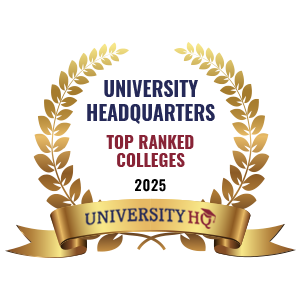
Student Enrollment
Total Students3,523
3,069
454
Undergraduate Student
Male 1,105
Female 1,964
Graduate Student
Male 163
Female 291
Explore Map
Top Rankings For Alcorn State University
Admissions
APPLICATIONS5,236
ACCEPTANCE3,037
Acceptance Rate58%
Enrollment 516
| Admissions | |
|---|---|
| Application Fee | NA |
| High School GPA | Required |
| High School Rank | Recommended |
| High School Transcripts | Required |
| College Prep Courses | NA |
| Recommendations | Considered But Not Required |
| SAT/ACT | Required |
| TOEFL (Test of English as a Foreign Language) | Required |
| Application Deadline | Rolling |
| Common Application Accepted | No |
Tuition Cost & Financial Aid
The total cost at Alcorn State University was $24,268 for a recent school year. This combines all the charges and fees you or your parents need to pay for a year including tuition, room and board, books, supplies, and other various charges, such as fees every student pays.
Colleges and universities track the average net price (in this case, $13,907) that their students pay. This number reflects how much is left for the students and their families to pay after financial aid has been applied to their bill. Lucky for some families, because financial aid eligibility is decided by annual income, some families will pay much less in their net price after financial aid is applied. In a recent academic year, Alcorn State’s net price by income broke down as you can see below.
- Families earning up to $30,000 paid around $13,687
- Families earning between $48,000 and $75,000 paid around $17,792
- Families earning more than $110,000 paid around $20,500
So, as you can see, this could make a big difference, which is why it’s important to apply for as much student financial aid such as grants, scholarships, and even federal student loans, as is optimal for your family.
As a freshman student, if you qualify for financial aid, you’ll be in good company. A full 88% of freshmen in a recent year qualified for aid as well. These freshman received an average of $9,738 in financial aid and about half as many received an average of $8,450 in institutional grants and scholarships.
| Average net price | 2018-2019 |
|---|---|
| Net Price | $13,907 |
| Average Total Aid | $9,738 |
| Students Receiving Financial Aid | 88% |
| Room & Board | $10,374 |
Sticker Price
- Tuition In-State - $7,290
- Tuition Out-of-State - $7,290
- Books and Supplies - $1,586
- Room & Board - $10,374
- Other - $5,016
Academics
You may prefer to take one of your classes in the evening or via the internet. At Alcorn State, you won’t have the option of evening classes, but you will be able to make the most out of their online learning options. You’ll only be able to choose classes, not entire degree programs for the online option.
Maybe you’ll start out your college career frustrated and ready to make a change and perhaps even transfer to a completely different school. If you do, there are plenty of great options available but, if you stick it out, you’ll be part of the retention rate. The retention rate tracks the percentage of students who attend in their first year and choose to come back as a second-year student. At Alcorn, this is a whopping 80%. That is well above the average retention rate, so they must be doing something right!
The 4-year graduation rate is a bit low at 22%, though this isn’t far off the average for public universities and the 6-year rate is not quite double that at 40%. Even though the student population is small, the university provides an education to students earning their undergraduate and graduate degrees. However, the percentage of graduate students is much lower than that of the undergraduate students (13% vs 87%).
The most popular degree programs are biological and biomedical sciences; liberal arts and sciences, general studies and humanities; business, management, marketing and related support services; health professions and related programs; and public administration and social service professions.
Retention
Rate
4 year
Graduation
Rate
6 year
Graduation
Rate
Student Population Total
Student Population 3,523
3,069
454
Most Popular Programs & Majors
(# of Diplomas Awarded by Subject)
| All Biological & Biomedical Majors | 103 Total Graduates / 20% |
|---|---|
| Biology/Biological Sciences, General | 103 Graduates |
| Liberal Arts and Sciences, General Studies and Humanities | 82 Total Graduates / 16% |
| Liberal Arts and Sciences/Liberal Studies | 82 Graduates |
| All Business Majors | 45 Total Graduates / 9% |
| Business Administration and Management, General | 33 Graduates |
| Accounting | 12 Graduates |
| Health Professions and Related Programs | 33 Total Graduates / 7% |
| Registered Nursing/Registered Nurse | 33 Graduates |
| Public Administration and Social Service Professions | 31 Total Graduates / 6% |
| Social Work | 31 Graduates |
| All Other Diplomas | 42% |
Outcome & Salary
The hope if that, after you finish school, you’ll land a wonderful job and your salary won’t be bad either. Whether or not this happens can come down to hard work or luck or both. However, you can check out how previous graduates have done based on their average salaries. Recent graduates earn an average early-career salary of $49,100 and their mid-career salaries increase to $69,500, which is about average for a public institution.
Based on these numbers, graduate’s 10-year salary earning potential is $600,450 and their 20-year earning potential is $1,295,450. If you subtract the average 4-year cost of education ($55,628) from these figures, you’ll find their projected return on investment (ROI). Their 10-year projected ROI is $544,822 and their 20-year ROI is $1,239,822.
Some high school graduates don’t go to college, but instead get right into the work force. Their national average salary is $38,792. Their 10-year projected income is $387,920 and their 20-year is $775,840.
| Graduates Salary | |
|---|---|
| College Grads Early Career Salary | $49,100 |
| College Grads Average Salary | $60,045 |
| College Grads Mid Career Salary | $69,500 |
| Return on Investment (ROI) | |
|---|---|
| 10 Year Salary Earnings Potential | $600,450 |
| 20 Year Salary Earnings Potential | $1,295,450 |
| Cost of Education (Net Price) 4 Year | $55,628 |
| 10 Year Projected ROI | $544,822 |
| 20 Year Projected ROI | $1,239,822 |
| No College Education Salary Comparison | |
|---|---|
| National Average Salary | $38,792 |
| 10 Year Projected Income | $387,920 |
| 20 Year Projected Income | $775,840 |
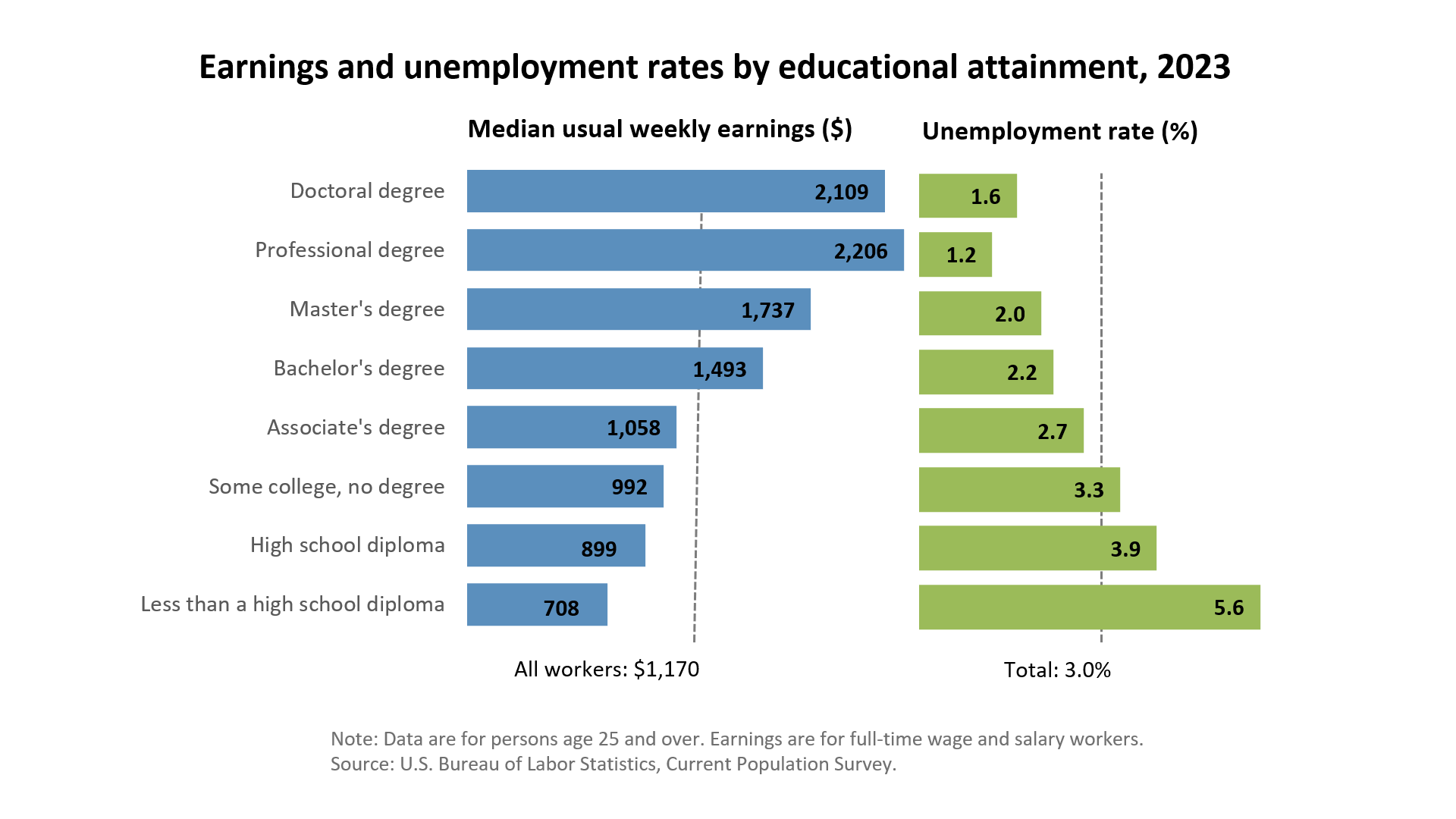
Related Top College Resources
Search All Programs

